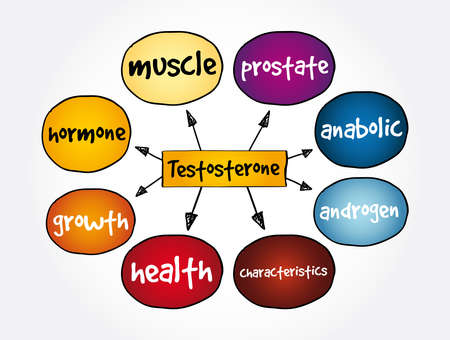Intro to Macros: Why They Matter on the Trail
If you’ve ever hit the trail for a long hike, gone for a strenuous run, or set out on a multi-day backpacking trip, you know that fueling your body is just as important as lacing up the right boots. That’s where “macros”—short for macronutrients—come into play. At their core, macros are the nutrients your body needs in large amounts: carbohydrates, proteins, and fats. Each one plays a unique and critical role in how your body performs, recovers, and stays energized during outdoor adventures.
Understanding what these nutrients do isn’t just nutritionist talk—it’s practical trail wisdom. Carbohydrates are your body’s primary energy source, especially when you’re climbing elevation or pushing through those last few miles. Proteins help repair muscle damage after tough treks and support long-term strength. Fats provide sustained energy for those steady hours on the move when carbs run low. Balancing all three means you’ll avoid bonking mid-hike and recover faster once you’re back at camp.
For American hikers, runners, and backpackers, paying attention to macros isn’t about dieting—it’s about equipping yourself to meet the demands of wild places. It’s about staying sharp, feeling strong, and making sure every step counts toward an epic day outdoors. In this series, we’ll break down each macro so you can pack smarter snacks, plan better meals, and get more out of every adventure.
2. Carbs: Fast Fuel for Long Miles
When you’re out on the trail, whether it’s a brisk morning hike or a multi-day backpacking adventure, carbohydrates are your go-to source for quick and reliable energy. Unlike fats and proteins, carbs are broken down rapidly by your body, providing the essential glucose your muscles need to keep moving—especially when the terrain gets tough or the miles start adding up.
Why Carbohydrates Matter on the Trail
Carbohydrates serve as the primary fuel for endurance activities. They help maintain blood sugar levels, delay fatigue, and boost both mental focus and physical output. If you’ve ever “hit the wall” during a long trek, chances are your carb reserves were running low. This is why it’s vital to include a steady stream of carbs throughout your day on the trail.
How Carbs Power Your Adventure
Your body stores carbohydrates as glycogen in muscles and the liver. When you’re hiking, backpacking, or trail running, these stores get tapped first for fast energy. But once they’re depleted, performance drops off quickly—so refueling with carb-rich foods is key for sustained effort.
Common Carb-Rich Trail Foods
| Food | Carb Content (per serving) | Trail Benefits |
|---|---|---|
| Instant oatmeal packets | 27g-32g | Quick to prepare, warming for mornings |
| Tortillas/flatbreads | 20g-30g | Pliable and packable, great with nut butter or cheese |
| Dried fruits (raisins, apricots) | 20g-35g | No-cook, lightweight, natural sugars for quick boosts |
| Energy bars/granola bars | 18g-45g | Pre-portioned, easy to eat while moving |
| Pasta or instant rice meals | 40g-55g | Satisfying dinner options after a long day’s trek |
| Candy/gummies (for emergencies) | 15g-30g | Ultra-fast sugar hit when energy dips suddenly |
The trick is to mix slow-digesting complex carbs—like whole grain breads or oatmeal—for sustained energy, with quick-digesting simple carbs such as fruit or candy for rapid recovery or emergency boosts. By understanding how carbs work and what to pack, you’ll set yourself up for consistent energy and peak performance all day on the trail.

3. Proteins: The Unsung Hero of Recovery
When you’re clocking mile after mile on the trail, carbs tend to get all the attention as your body’s go-to energy source. But protein is your behind-the-scenes MVP, quietly repairing muscle fibers and helping you bounce back day after day. Whether you’re thru-hiking the Pacific Crest Trail or tackling a weekend adventure in the Rockies, keeping an eye on your protein intake is a game-changer for sustained performance and injury prevention.
Why Protein Matters After a Long Day
Every step on rugged terrain creates microtears in your muscles. While that sounds intense, it’s part of how you get stronger—but only if your body has what it needs to rebuild. Protein provides amino acids, the building blocks your muscles use to repair themselves overnight. Skimp on protein, and you risk feeling sluggish, sore, or even sidelined by injuries before your trip is over.
Finding Trail-Friendly Protein Sources
So, how do you work enough protein into your backcountry meal plan without weighing down your pack? Here are some tried-and-true options:
Jerky and Meat Sticks
Beef, turkey, or vegan jerky packs a serious punch—high in protein, portable, and shelf-stable. Just watch sodium content and look for brands with minimal additives.
Powdered Options
Single-serve packets of whey or plant-based protein powder are clutch for ultralight hikers. Stir into oatmeal or coffee for a quick boost without any mess.
Nuts and Seeds
Almonds, peanuts, pumpkin seeds—these add both fat and protein to your snack mix. While not as concentrated as animal sources, they’re easy to stash and munch on the move.
Pouched Tuna or Chicken
If you crave something savory at camp, foil pouches of tuna or chicken hit the spot without refrigeration. Bonus points: toss into tortillas for a satisfying trail dinner.
Packing Smart for Optimal Recovery
Aim for at least 15–25 grams of protein per main meal when hiking hard. Mix up sources to keep things interesting—and remember that recovery starts as soon as you set up camp. With just a little planning, you’ll give your muscles the support they need to help you wake up strong and ready to tackle tomorrow’s miles.
4. Fats: Slow-Burning Energy Reserves
When you’re logging serious miles on the trail, fats aren’t just a backup energy source—they’re your secret weapon for endurance. Unlike carbs, which give you that quick burst of fuel, fats provide a slow-burning, sustained release of energy that keeps you moving long after your last snack break. This becomes especially important on multi-day hikes where calorie needs skyrocket and opportunities to refuel are limited.
How Healthy Fats Power Your Adventure
Fats are the most calorie-dense macronutrient—packing about 9 calories per gram (compared to 4 for carbs or protein). This means you can carry more calories in less space, which is clutch when every ounce counts in your pack. The body taps into fat stores when glycogen (from carbs) runs low, supporting steady energy for hours without bonking. Plus, healthy fats help absorb vitamins A, D, E, and K—key nutrients for recovery and immune support on the trail.
Trail-Worthy Sources of High-Quality Fats
| Food | Type of Fat | Why It’s Trail-Friendly |
|---|---|---|
| Nuts & Nut Butters | Monounsaturated, Polyunsaturated | Lightweight, no cooking needed, satiating |
| Olive Oil Packets | Monounsaturated | Packs big flavor & calories in tiny servings |
| Coconut Chips/Flakes | Saturated (plant-based) | Energy-dense, shelf-stable, adds crunch |
| Cheese & Hard Sausage | Saturated, Monounsaturated | No refrigeration needed for short trips, savory protein boost |
| Dark Chocolate | Saturated, Monounsaturated | Mood boost + dessert + energy hit in one bite |
Packing Tips for More Healthy Fats On Trail
- Pre-portion nut butters and oils: Use single-serve packets or reusable squeeze tubes to avoid spills and control portions.
- Add fats to meals: Drizzle olive oil over instant grains or stir coconut flakes into oatmeal for extra staying power.
- Choose calorie-dense snacks: Swap out some granola bars for nut mixes or cheese sticks to up your fat intake without bulking up your food bag.
- Watch out for spoilage: Stick with shelf-stable options if you’re out for more than a couple days—hard cheeses and cured meats travel better than fresh dairy or soft spreads.
The right mix of healthy fats will help keep your legs pumping and your spirits high—even when the trail gets tough. Don’t shy away from incorporating these slow-burning fuels into your backpacking menu; they might just be the edge you need on those long-haul days.
5. Balancing Your Intake: Real-World Macro Strategies
If you want to maximize your trail performance, dialing in your macro intake isn’t just science—it’s an art form shaped by your trip length, hiking intensity, and your own body’s needs. Here’s how experienced thru-hikers approach real-life nutrition in the backcountry, plus sample menus to help you hit the ground running (or trekking).
Actionable Macro Adjustments by Trip Type
Short Day Hikes (1–2 days)
For quick adventures, energy is king. Aim for a higher carb ratio—think 55–65% of total calories—with moderate protein (15–20%) and healthy fats (20–25%). This fuels quick-burning energy without weighing you down.
Sample Menu:
- Breakfast: Instant oatmeal with dried fruit and a spoonful of peanut butter
- Snack: Trail mix heavy on dried bananas and pretzels
- Lunch: Whole wheat wrap with turkey jerky and cheese sticks
- Dinner: Couscous with chickpeas and olive oil drizzle
Multi-Day Backpacking Trips (3–7 days)
Your body needs sustained fuel for recovery and stamina. Shift toward a balanced split: Carbs at 50%, fats at 30%, protein at 20%. Fats become important for calorie density, while protein helps muscle repair.
Sample Menu:
- Breakfast: Granola with powdered milk and nuts
- Snack: Nut butter packets and fig bars
- Lunch: Tuna salad on tortillas with avocado powder
- Dinner: Dehydrated pasta with freeze-dried beef crumbles and pesto sauce
Thru-Hiking & High Intensity (weeks to months)
This is where every calorie counts. Many thru-hikers up their fat intake—sometimes up to 40–50%—since fats pack over twice the calories per gram compared to carbs or protein. Protein stays steady (15–20%), but carbs remain essential for endurance.
Sample Menu (as inspired by PCT hikers):
- Breakfast: Instant coffee blended with coconut oil and oats
- Snack: Cheese crisps and salami slices
- Lunch: Tortillas stuffed with nut butter, honey, and crushed granola bars
- Dinner: Freeze-dried chili mac with extra olive oil packet stirred in
Tried-and-True Tips from Experienced Hikers
- Pace Yourself: Don’t overhaul your macros overnight. Test new foods and ratios on training hikes before committing on the trail.
- Mileage Matters: Higher mileage days require more carbs; rest days can lean more on fats for satiety.
- Shelf-Stable Solutions: Favor foods that won’t spoil—hard cheeses, cured meats, nut butters, dehydrated meals—for both safety and convenience.
- Tweak As You Go: Listen to your body! Energy dips may mean upping carbs; muscle soreness could signal a need for more protein.
The bottom line? There’s no one-size-fits-all macro ratio for trail nutrition. The best plan blends practical know-how, personal trial-and-error, and a little bit of creativity. Take notes, stay curious, and let your next hike be your best yet!
6. Trail Nutrition Myths Debunked
When it comes to fueling your adventures, there’s a lot of noise out there—especially on social media and in online forums. Let’s cut through the hype and focus on what really matters when balancing macros for outdoor performance.
Myth #1: “You Need Tons of Protein to Power Through Hikes”
While protein is crucial for muscle repair, many believe they need to double or triple their intake on the trail. In reality, overloading on protein can weigh you down and may even leave you dehydrated if you’re not careful about water intake. Most hikers do best sticking with moderate protein, focusing instead on carbs for sustained energy.
Myth #2: “Carbs Are Only for Endurance Athletes”
This myth has deep roots thanks to trendy low-carb diets. The truth? Carbs are your body’s preferred fuel source during long hikes or climbs—regardless of whether you’re running an ultramarathon or just backpacking through the Rockies. Skimping on carbs can lead to fatigue, brain fog, and sluggish performance.
Myth #3: “Fat Is Bad for Energy on the Trail”
Some folks still fear fat, but it’s actually an essential macro—especially on multi-day adventures where calorie density matters. Healthy fats from nuts, seeds, cheese, or nut butter pack more calories per ounce than most carb-heavy snacks and help keep you satisfied between meals.
What Actually Works?
The key is striking a balance tailored to your activity level and duration. For day hikes, a mix of simple and complex carbs (think trail mix with dried fruit), moderate protein (like jerky), and healthy fats (nuts or avocado) will keep you energized. For longer trips, adding more calorie-dense fats helps lighten your food load without sacrificing nutrition.
Don’t Fall for the Gimmicks
Energy gels and expensive “performance bars” aren’t magic; real food works just as well—or better—for most people. Listen to your body, adjust based on weather and intensity, and remember that smart macro balance—not marketing fads—is what keeps you moving strong on the trail.
7. Gear Up: Packing, Prepping, and Planning for Macro Success
Hitting the trail with your macros dialed in is about more than just what you eat—its how you prep, pack, and plan your food so every meal fuels your adventure. Here’s how to make sure your nutrition stays balanced from trailhead to summit.
Keep It Lightweight, Keep It Balanced
Trail meals need to be light but loaded with the right macro mix. Aim for foods that deliver high nutritional value per ounce—think dehydrated beans for protein, instant rice or couscous for carbs, and small packets of olive oil or nut butter for fats. American hikers often swear by classic staples like peanut butter tortillas and tuna packs because they’re calorie-dense, easy to pack, and no-fuss on the go.
Essential Food Prepping Tips
Prepping at home saves time and hassle on the trail. Portion out single-serving bags of mixed nuts or homemade trail mix (blend in dried fruit for quick carbs). Prep overnight oats in reusable containers so breakfast is grab-and-go. Measure out powders (like protein or electrolyte mixes) in advance using snack-size baggies to save space.
Smart Storage for Freshness and Safety
Invest in zip-top bags, vacuum sealers, or silicone pouches—these keep food fresh and safe from critters. Consider a bear canister if you’re hiking in areas where wildlife is active; nothing ruins macro planning like a bear stealing your snacks! Label everything with sharpie markers so you know what’s what without digging through your pack.
Plan Your Meals Around Your Mileage
Match your daily mileage and elevation gain with your macros—more climbing means more carbs, longer days mean more overall calories. Sketch out a rough meal plan before you go: breakfast, lunch, dinner, plus snacks for every two hours of hiking. Don’t forget recovery foods (like jerky or a protein bar) for camp at night.
Final Pro Tips
Always bring a little extra—weather or detours can extend your trip unexpectedly. Stash an emergency energy gel or spare nut butter packet in an easy-to-reach pocket. Practice packing at home so you know exactly where everything is when hunger strikes.
Nailing your macros on the trail takes a bit of planning up front, but it pays off big time in steady energy and a happier hike. With smart prepping and packing, you’ll stay fueled for whatever adventure comes next.


